Written By: David A. Kaufman
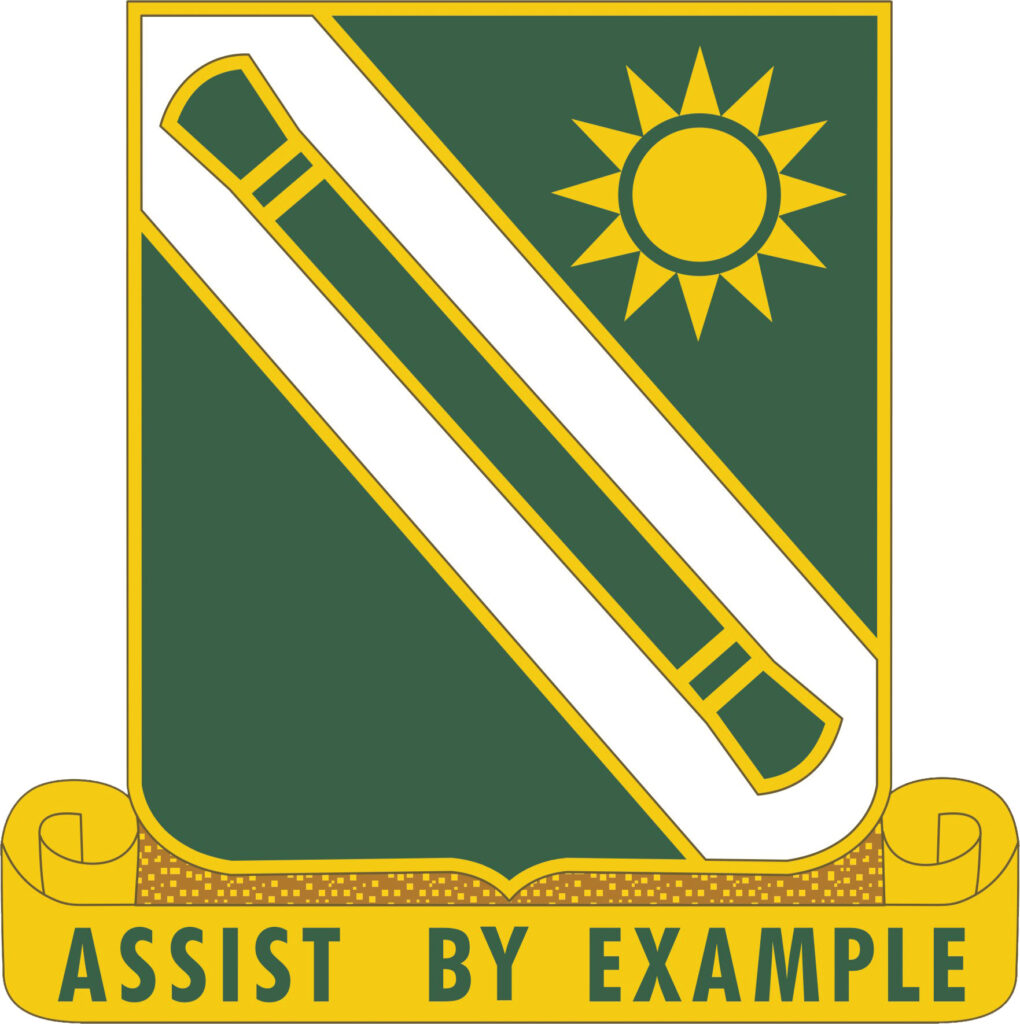
Before World War II, military police was not a defined branch of service. During World War I, there was no formalized training or tactics for military police, who were usually chosen for their size and quickness with batons. After the war; military police duty consisted of small units which directed traffic on and around military posts, plus a little crime prevention patrol. Selection to units was at the whim of the unit commander. There were some attempts to formalize the training, but these all failed. With the Selective Service Act of 1940, the Army grew dramatically in size and the need to police itself professionally became a reality. It was a difficult undertaking since there were no manuals, no equipment, and no officers trained as military police.
The 701st Military Police Battalion, one of the first such battalions in the U.S. Army, was activated at Fort Snelling, Minnesota, on 1 February 1941. Filled with draftees, the battalion was assigned to VII Corps to serve as internal security and Zone of Interior troops, thus releasing combat troops from that duty. As quickly as draftees were trained, they were sent out to train newly activated military police battalions. The troops had no outside civilian instructors, except for New York City Police Department physical training instructors who demonstrated various restraint holds.
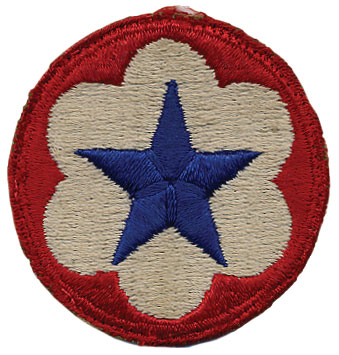
Detachments from the 701st were sent to guard radio and railroad stations in St. Louis and Kansas City, Missouri. Many German spies and sympathizers were operating on ham radios, so the government ordered all ham radios to shut down. Ham radio transmissions were monitored from a radio-monitoring site in Nebraska. In January 1942, Company B was temporarily detached to guard prisoners of war at Camp McCoy, Wisconsin.
In the summer of 1942, the remainder of the battalion was sent to Fort Oglethorpe, Georgia, to serve as a demonstration battalion for the Provost Marshal General’s School. This was the first military police school for training officers and enlisted men. By demonstrating the “how tos” of military policing to newly activated units, the Military Police Branch benefited, and the battalion itself became more professional.
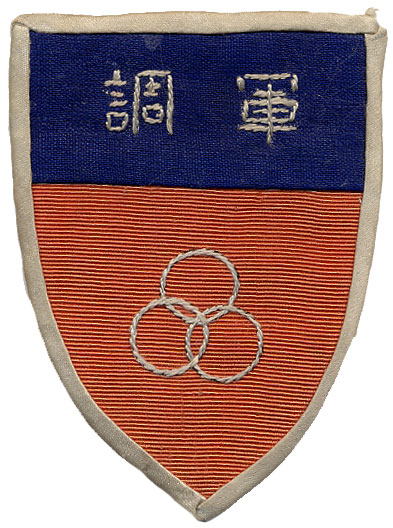
From its newly assigned post at Fort Snelling, the 701st provided security and protection for the war industries around Minneapolis-St. Paul. Battalion soldiers guarded factories, ordnance shipments, radio stations, and airports and trained civilians to take over these duties. The battalion also provided firing parties for military funerals.
One of the battalion’s more unusual duties was its participation in experiments at the University of Minnesota. In one experiment that led to the development of K-rations, the men existed on food pellets for long periods of time. Another experiment tested human reaction to sleeping in air conditioned rooms.
In November 1942, the Provost Marshal General’s School and the 701st were transferred to Fort Custer, Michigan, and assigned to the 6th Service Command. In March 1943, electrical workers in Michigan threatened to strike, which would have crippled the war industry in the region. The workers said they would walk off their jobs at a certain hour if their demands were not met, so all four companies of the battalion were dispatched to Saginaw and Grand Rapids. Union leaders called off the strike a couple of hours before “zero hour,” due in no small part to the arrival of the armed soldiers.
The night of 21 June 1943 brought the toughest test yet for the 701st. The day before, a race riot had broken out in Detroit, Michigan, and quickly overwhelmed the Detroit Police Department, which was depleted because of the wartime draft. More than forty people were killed and another 800 were injured before the battalion arrived. Within two days, military police controlled the city and brought calm. Only sporadic outbreaks of violence were reported during the remainder of the summer.
After the 701st returned from Detroit, Company B was included in a training film on riot control that was shown to other military police battalions. Soon after, the 701st received orders to drop personnel not fit for overseas duty and to secure replacements who were fit. Personnel prepared as if they were going overseas. Company A, however, was to report to Fort Wayne Ordnance Depot, Indiana. For a short time, the company worked in factories because of a draft-generated shortage of defense industry workers. In September 1944, the Provost Marshal General’s School was transferred to Fort Sam Houston, Texas, and the 701st was directed to prepare for combat training. Plans changed and the battalion sent a large security contingent to a civil aviation meeting in Chicago later in the fall. The battalion continued training at Fort Custer through the winter of 1944-45.
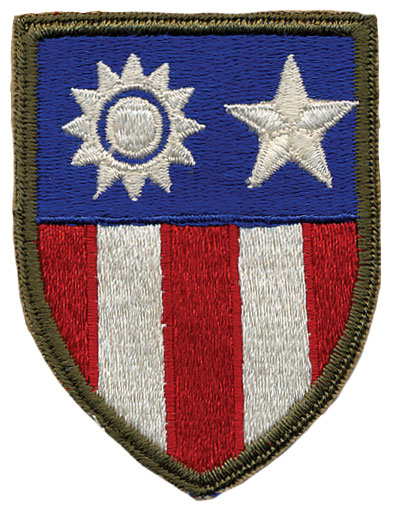
Early in 1945, the 701st convoyed trucks to the Boston port of embarkation, preparing to move overseas. A truckers’ strike in Chicago, however, caused the recall of the battalion. Working with the 748th Military Police Battalion, the 701st returned and kept cargo moving without incident by providing armed escorts. As a result of their assistance in suppressing the Detroit riot and escorting truck convoys to expedite supplies during the Chicago truckers’ strike, the 701st received a Meritorious Unit Commendation in June 1945.
In August 1945, the 701st went to Camp Claiborne, Louisiana, to prepare for assignment to the Pacific Theater. Before they could be deployed, the atomic bombings forced the Japanese to surrender. As a result, the battalion was sent to Fort Belvoir, Virginia, instead of the Pacific. Draftees were mustered out, but replacements brought the 701st back to full strength. Subsequently the 701st was sent to China, arriving in Shanghai on 17 March 1946. Shanghai was a city in transition, as was the Nationalist government. Corruption and vice had been rampant for centuries. Now, U.S. and Nationalist Chinese military personnel were involved in these activities, primarily in the black market. There were also thousands of defeated Japanese troops who had to be repatriated back to Japan.
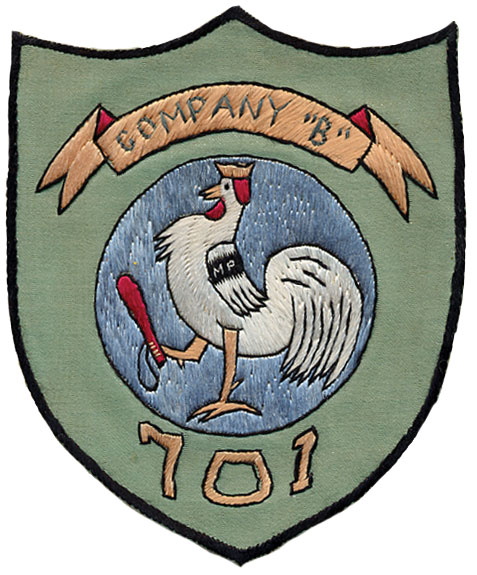
The 701st absorbed personnel from other units, including the 40th Military Police Battalion and the 116th and 247th Military Police Companies. The 701st also formed a liaison with the Navy Shore Patrol, the 23d Gendarmerie Regiment (English-speaking Chinese trained as policemen), and the Shanghai Voluntary Police (businessmen who volunteered to combat crime). The 701st also established the Auxiliary Military Police Battalion. Initially comprised of Sikhs, its ranks were soon filled with White Russians, French.
Companies A and B were assigned to town patrol. Representatives from the 701st, the Navy Shore Patrol, the 23d Gendarmerie, and the Shanghai Volunteer Police rode four to a jeep, patrolling the streets randomly, much as they would in the United States. They supported two-man foot patrols on their assigned posts. The patrols operated twenty-four hours a day, seven days a week, in eight-hour shifts. There was limited radio capability since personnel in the jeeps could communicate with each other but not with their headquarters. The patrols, especially those on foot, were on their own.
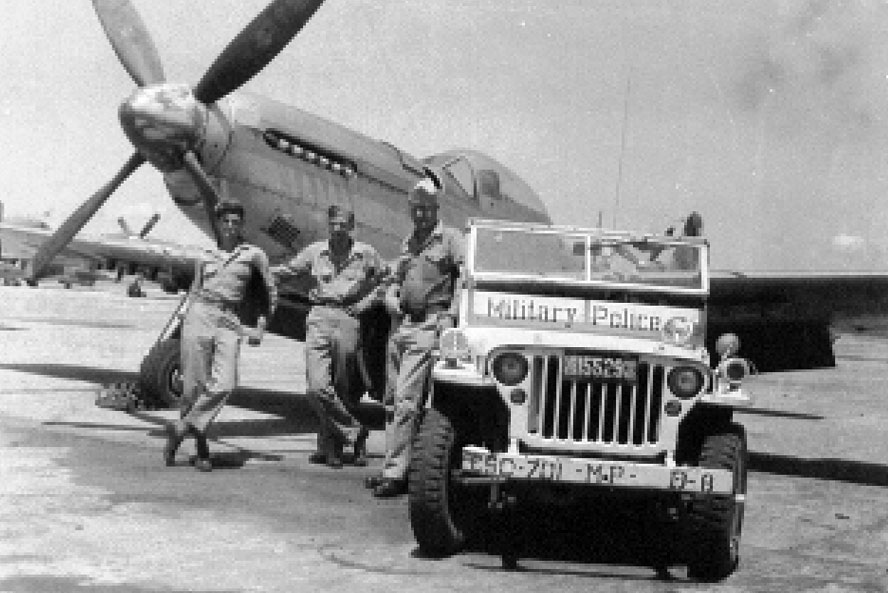
Company B was withdrawn from this assignment and sent to West Field Air Base, which provided air support to Peiping Headquarters Group, to guard military supplies and the 332d Troop Carrier Squadron. Company C was assigned to harbor patrol. Company D was assigned to protect Kiangwan Air Base (the busiest airport in China) and provide dignitary escorts. A detachment from the battalion headquarters was assigned to Ward Road Jail, where many Japanese war criminals were held. This detachment also escorted war criminals to Sugamo Prison, where some of the criminals were executed.
As thorough professionals, soldiers from the 701st knew that their jobs were not only military but also diplomatic. The battalion’s relations with the Russians were difficult. In addition, Chinese communists continually attacked the rail lines. In one instance, on 29 July 1946, four Marines were killed and several wounded in an ambush by the communists. Because of the ambush and other hostilities, protection of the military police on patrol in Shanghai and Peiping was improved. They no longer patrolled in jeeps but in M8 and M20 armored cars.
The entire 701st Military Police Battalion, less Company C, remained in Shanghai assigned to Peiping Headquarters Group in late 1946. GEN George C. Marshall commanded a special mission in China to end the civil war between Nationalist and Communist Chinese forces. Peiping Headquarters Group was truce headquarters. The battalion provided security for Peiping Headquarters Group and also guarded supply trains and railroad tracks. Communist forces continually tore up the tracks or removed the ties and used them for firewood and shelter.
At Peiping, the 701st set up joint operations with the 5th Marines and provided security for the supply depot there. The military police provided personnel for the thirty-six peacekeeping teams in northern China and Manchuria. Each team was composed of a U.S. Army officer, Nationalist and Communist Chinese officers, a U.S. noncommissioned officer, a neutral Chinese interpreter, and a radio operator. Unfortunately, the peacekeeping teams were a failure and were withdrawn to Peiping. Nationalist China, however, was collapsing rapidly, and the truce headquarters had to be withdrawn from Peiping. The 701st guarded supplies and helped U.S. dependents leave the city.
After the withdrawal, Company B went back to providing security for West Field Air Base and the Army Graves Registration Service (AGRS) teams that were recovering casualties from remote regions of China. The teams worked mostly in western China because of the U.S. aircraft shot down or lost between Burma and Kunming. This was a desolate and mountainous area that covered all of Yunnan Province and a good part of Szechwan Province. The teams usually consisted of a military policeman, an enlisted man from the AGRS, and a Chinese interpreter. They were equipped with a Jeep with a 1/4 ton trailer and armed with .45-caliber pistols and automatic weapons. They also carried canned rations, some spare parts, and a large suitcase with Chinese currency.
Two to four teams were flown into the interior in C-47s to a major town with an airstrip and continued on from there. In most cases, the hill people remembered if a plane had crashed and could help pinpoint the area. A major problem was that the hill people thought that the big aluminum bird had been sent to them to provide metal, and they often stripped the planes of almost all identification. However, they were respectful of the dead and frequently gave the remains a decent burial. The teams were able to disinter the bodies, pack them in boxes along with any identification, and return them to the United States.
On 1 April 1947, the 701st was redesignated the 701st Military Police Service Battalion. Company A was inactivated, so Company D was redesignated Company A. The unit strength, which should have been 212 men, was reduced to 160. A fire department team was established, with duties that included continuous inspections of buildings and locations. The battalion had the responsibility of protecting U.S. forces withdrawing from Peiping by rail. Personnel with automatic weapons on armored flatcars guarded the trains, while planes provided cover from overhead.
Company B became involved in a sensational incident in April 1947 when two of its soldiers and an officer from a military intelligence unit arrested a ten-man Nazi spy ring headquartered in Shanghai. The Nazi ringleader, LTC Ludwig Earhardt, who headed German military and naval intelligence in Asia, was among those arrested. Eventually, nineteen Italian and Japanese nationals were also arrested. The arrestees claimed responsibility for sinking U.S. ships, including one aircraft carrier, as well as other acts of espionage following the German surrender. They were transferred to the Ward Road Jail.
As the Chinese communists increased their gains throughout China in 1948, the personnel and equipment of the 701st were reduced because of attrition. Replacements were slow in coming. To combat the expanding communist threat, the military police began to use more and more infantry tactics. Communist forces were only fifteen miles from Nanking, the capital of Nationalist China and headquarters of the Joint U.S. Military Advisory Group-China.
Evacuation of all U.S. forces and their dependents began in November 1948. The 701st was withdrawn to Japan and assigned to the 25th Infantry Division and I Corps in early 1949. For its service in China, the 701st earned a second Meritorious Unit Commendation. The battalion was then transferred to the Zone of the Interior and assigned to the Presidio of San Francisco and Fort MacArthur, San Pedro, California (both Sixth Army stations). The 701st was transferred to Fort Knox, Kentucky (a Second Army station), where it was inactivated on 25 August 1956.
The 701st Military Police Battalion was reactivated on 16 September 1986 at Fort McClellan, Alabama, then home to the U.S. Army Military Police School, to provide administrative, logistical, personnel, and training support for the Military Police School, as well as instruction for Military Police Advanced Individual Training. With the closure of Fort McClellan in 1999, the 701st was re-assigned to Fort Leonard Wood, Missouri, the new home of the Military Police School, where it continues to serve to this day.



